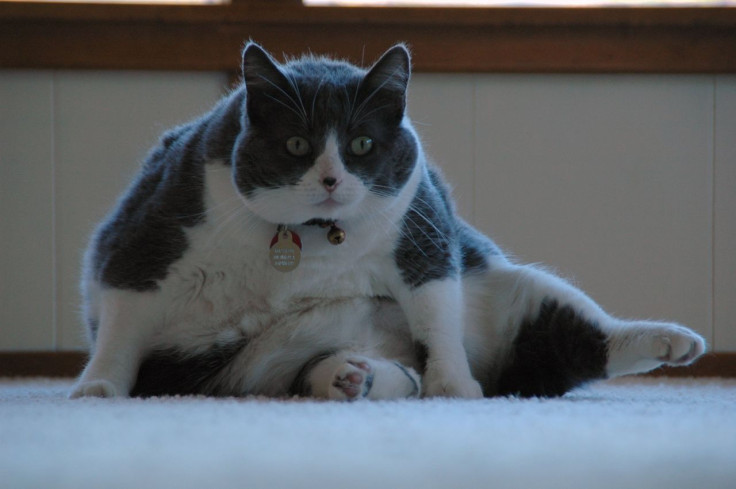Fat Cat, Fat Owner: More Than Half Of All American Pets Are Obese (Because We Are, Too)

We love our fat pets. We love them because there’s more of their big, furry bodies to love. But cats and dogs aren’t immune to the stressing forces of excess body weight, especially among certain breeds more prone to joint damage. A new study finds more than half of all American pets are obese, even eclipsing the national obesity rate for humans of 34.9 percent.
Pet obesity is a problem in its own right, but it may also say something about the nation’s health, or lack thereof. Animals don’t have thumbs or bank accounts (yet) so they depend on us to keep them alive. But a wealth of research suggests pets may be doomed to an unhealthy life if their owners don’t make their own health a priority first.
The new study comes from the Association for Pet Obesity Prevention, which found an estimated 52.6 percent of dogs and 57.6 percent of cats are overweight or obese. Although the study didn’t look at the relationship between these pets and their owners, some data exist to suggest certain trends exist. A study from 2006, published in The Journal of Nutrition, found pet obesity was climbing in tandem with rates among humans. Study author Dr. Alexander German, of the Institute of Ageing and Chronic Disease, from the University of Liverpool, cited several concerns.
“For dogs,” German wrote, “owner factors that are of importance include the duration that the owner observed the dog eating (more likely to be longer in obese dogs), interest in pet nutrition, obesity of the owner, health consciousness of the owner (both for their pet and themselves), and lower income.” Cats’ health showed a weaker relationship to the health of their owners, who were more prone to feed their pets when they made any contact at all, mistaking general attention for a sign of hunger.
The trends also mirror one another in the types of diseases obese humans and pets tend to face. Humans who carry excess weight risk developing high blood pressure, type 2 diabetes, heart disease, and certain types of cancer — namely, breast, ovarian, and prostate cancer. Pets, meanwhile, face orthopedic disease, type 2 diabetes, cardiorespiratory disease, urinary and reproductive disorders, and neoplasia, including mammary tumors and transitional cell carcinoma. In both humans and pets, obesity also predicts early death.
Reversing the trend of obesity in pets carries much of the same advice humans hear on a daily basis. Animals need to eat better (which generally means also eating less), and they need to engage in some physical activity, like walks or runs for dogs and frequent playtime for cats. “There is also some evidence,” German explains, “that exercise may help prevent the rapid regain in weight that can occur after successful weight loss. The exact program must be tailored to the individual and take into account any concurrent medical concerns.”
Physical activity for pets has the happy benefit of increasing activity for their owners. Owners can take walks with their dogs. They can run around the house with their cats (staying careful to remove dangerous obstacles first), and they can save money by using less food.
Of course, all that is difficult because it means depriving something you love so much of something they seem to desperately need. In any case, it may be helpful for pet owners to remember that they are doing their pets a much larger favor by taking care of them (and themselves) now, rather than waiting until it’s too late.
Published by Medicaldaily.com



























